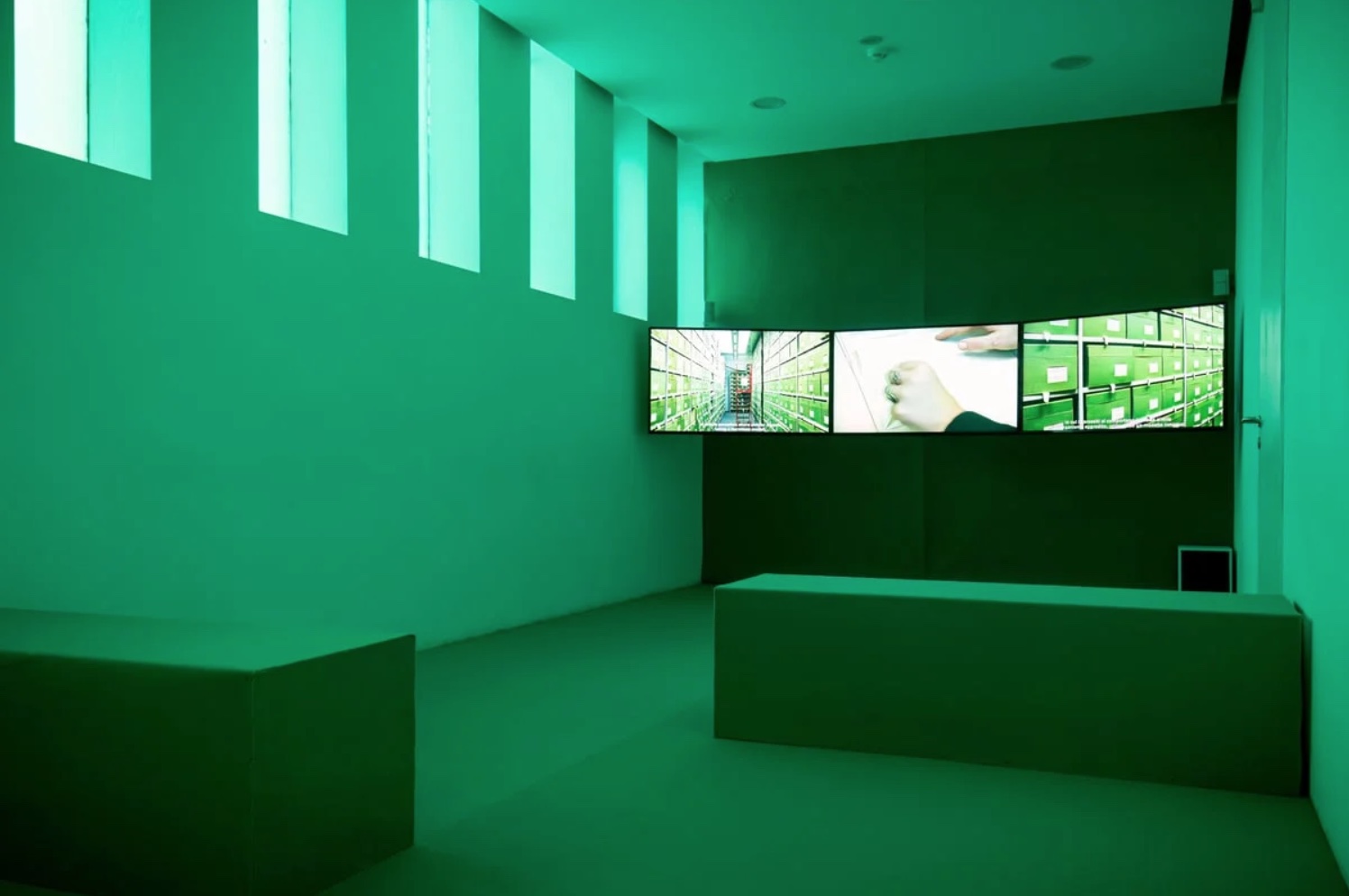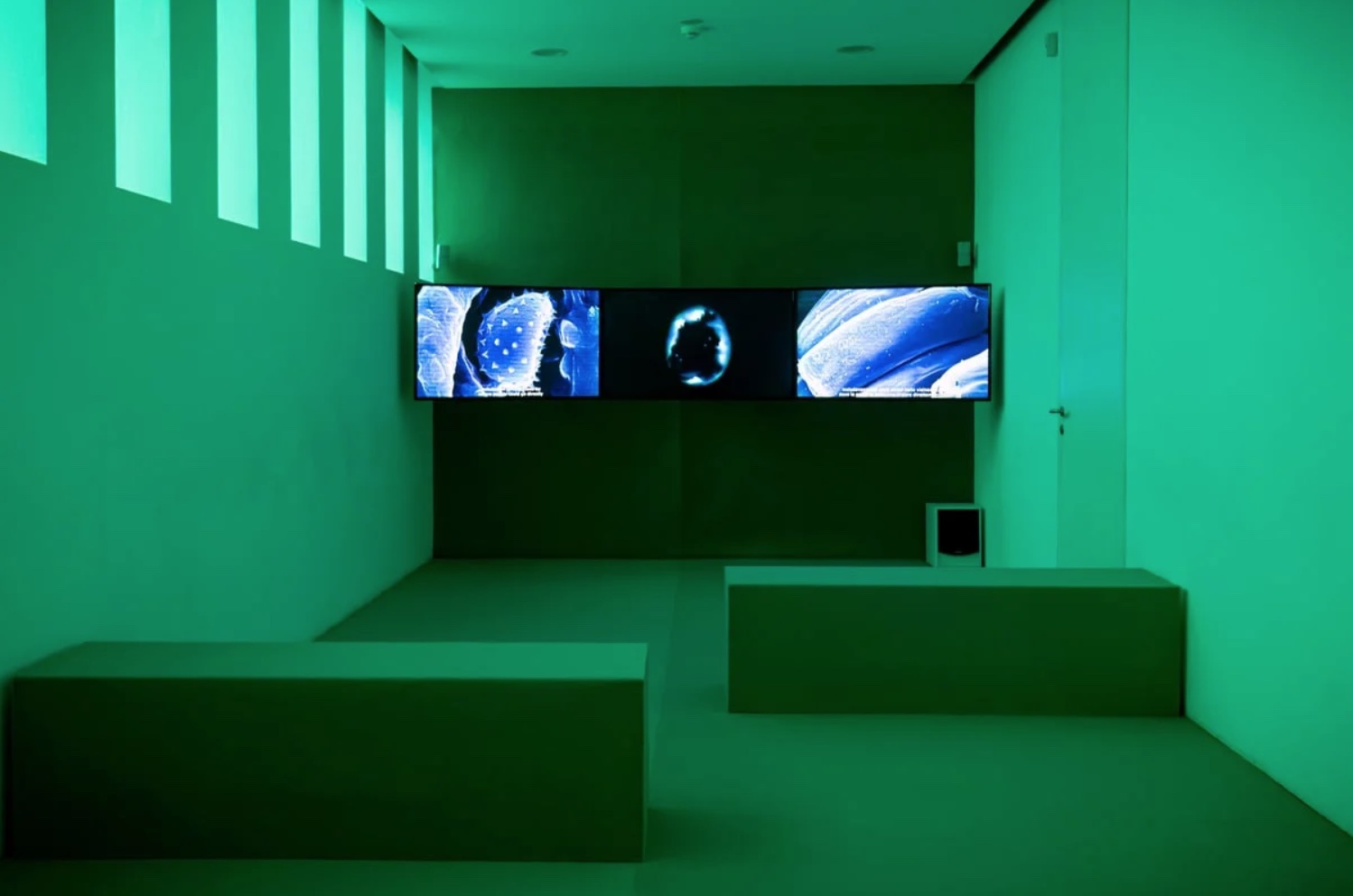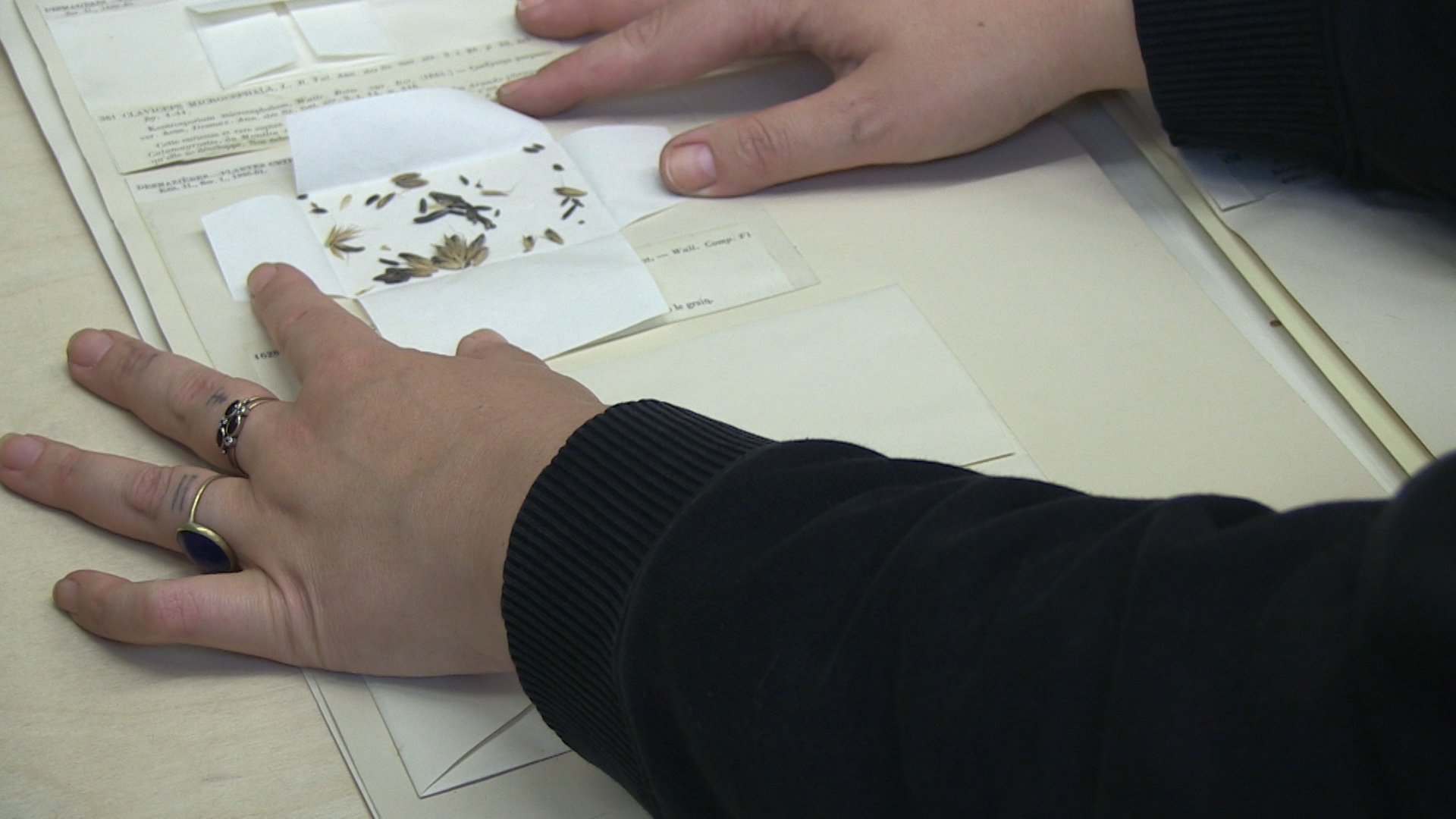
Liquid Transfers
Liquid Transfers is the new project by artist Diana Policarpo, produced in the context of the twenty-second edition of the illy Present Future Prize for the spaces of Fondazione Sandretto Re Rebaudengo. The work constitutes the ideal development of a larger body of work by the artist investigating the control of bodies by historical and contemporary patriarchal structures and the reconquest of spaces of self-defense and survival by marginalized subjectivities.
In her research, Policarpo crosses the disciplines of history, cultural anthropology and biogenetics by applying the filter of gender studies and Marxist feminism. In doing so, Policarpo crosses the documentary genre, fueled by archival materials and interviews with experts, with that of fiction, with a particular interest in feminist "world-building." Liquid Transfers follows the furrow traced by the artist starting in 2019, when Policarpo began researching the universe of mushrooms and the economic, social, and political implications of their use throughout modern and contemporary history. A first stage of this path is represented by the multimedia installation Death Grip project, presented in 2019 at the Museum of Art, Technology and Architecture (MAAT) in Lisbon. The project delved into the social and pharmacological function of Cordyceps, a fungus that grows in the larvae of the moth Thiratodes in the mountains of Nepal, India, Bhutan, and the Tibetan Plateau. This fungus has been used for centuries by local traditional medicine as a medicine to soothe a wide range of diseases, as well as to strengthen the immune system and affect longevity and virility. Having arrived on the Asian commercial market, Cordyceps quickly reached skyrocketing inflation, leading to a rush to harvest this resource by the most marginalized social classes. Policarpo focuses on the dramatic environmental impact caused by intensive harvesting of the mushroom and the violent social conflicts caused by the partitioning of its harvest for commercial purposes. In 2020, Policarpo’s interest shifts to the Iberian Peninsula, a territory rich in Claviceps purpurea, a hybrid parasite of rye better known as "ergot."
In his solo exhibition Nets of Hyphae (2020) at the Municipal Gallery in Porto, the artist reconstructs a speculative portrait of the fungus, delving into the historical intersections between the parasite and the power structures of modern societies. Ergot has mainly been known since the Middle Ages as an infectious agent of rye plants. Ergot intoxication, caused by excessive dietary consumption of the substance in the form of bread, induces burning, muscle spasms, hallucinations and gangrene, and has been categorized under the name "ergotism" or St. Anthony's fire. Policarpo’s attention also turns to another function of the parasite, in this case consciously employed by traditional medical knowledge. Small doses of Claviceps purpurea were in fact employed by healers and midwives to perform abortions and pre and postpartum treatments. Alongside the history of collective intoxication, ergot has therefore been an allied tool for hundreds of years in securing spaces for self-determination and reappropriation of reproductive politics by people with uteruses. The practice of these folk medicine knowledges and the struggle for control of bodies are again intertwined in the artist's work in Nets of Hyphae, which explores the relationship between ergotism and accusations of witchcraft. Among the various cases documenting the convergence between episodes of collective hallucination and female criminalization, Policarpo recalls the indictment of the Salem witches in Massachusetts. The trial, which took place between February 1692 and May 1693, involved more than two hundred people on charges of witchcraft. The episode of mass hysteria has been explained by many historians in light of extensive ergot intoxication that allegedly affected the subjects, who were later accused of being witches for their behaviour. The hallucinogenic quality of ergot was then, during the twentieth century, recognized and capitalized on in science. In 1938/43, chemist Albert Hoffmann employed the parasite to synthesize LSD-25 in his laboratory in Switzerland, beginning a new parabola that connects ergot and social dynamics to the present day.
As the latest chapter in this speculative constellation, Liquid Transfers ushers in a new path of inquiry. While keeping active the different narrative levels inherited from previous research, the work focuses on the processes of militarization of Claviceps purpurea and thus its use as a weapon. The installation consists of a three-channel synchronized video within an immersive environment reminiscent of the shades of rye. The video retells the story of a mass poisoning that occurred in 1951 in Pont-Saint-Espirit, southern France, also known as the "case of the cursed bread." On that occasion, five hundred people showed psychotic episodes, hallucinations, and convulsions. While the episode is commonly associated with ergot food poisoning, investigative journalist H.P. Albarelli has proposed attributing its responsibility to U.S. military programs. According to this reading, the Pont-Saint- Espirit poisoning would have been orchestrated directly by the CIA through the airborne dissemination of LSD-25. The operation would have contaminated local bread by inducing massive episodes of egotism and enabled a field study of enemy mind control policies. The thesis also recalls a report of LSD-25 supply to the CIA that during the 1950s was secured by Hoffmann's own laboratories in Switzerland. Through the registers of history and speculative fiction, Liquid Transfers makes visible the relationship between natural resource exploitation and the construction of social behaviour. By revisiting social and political events Policarpo creates a narrative universe in which the interconnectedness of extractive practices, control and exclusion of bodies is revealed.
Bernardo Follini



